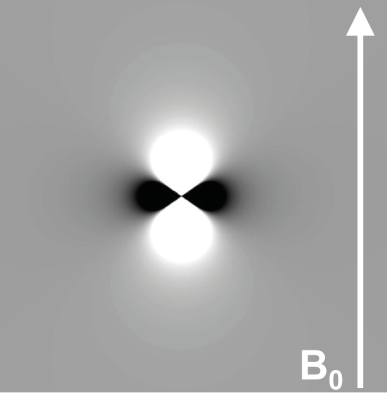Quantitative MRI: Quantitative Susceptibility Mapping
Quantitative MRI: Quantitative Susceptibility Mapping
Sunrise Session
Sunrise Session
ORGANIZERS: José Marques, Sebastian Kozerke, Ileana Hancu
Wednesday, 15 May 2019
| Room 513D-F | 07:00 - 08:00 | Moderators: José Marques, Rita Nunes |
Skill Level: Intermediate to Advanced
Session Number: S-W-08
Overview
Extend the understanding of the MR signal evolution beyond the simple phenemenological single-pool relaxation models.
During this educational course, the role of tissue physical properties such as magnetic susceptibility and electric conductivity and how they affect imaging and relaxation processes will be addressed. Furthermore, the role of diffusion, perfusion, flow in the observed signal and how they can be encoded and measured in MRI will be discussed.
Target Audience
Scientists who are interested in developing/improving quantitative MR approaches.
Educational Objectives
As a result of attending this course, participants should be able to:
- Develop MR pulse sequence design to implement practical encoding approaches of the various physical properties of tissues;
- Apply decoding equation/reconstruction to calculate tissue magnetic susceptibility, electrical conductivity, relaxation, diffusion, perfusion, flow; and
- Compare various software solutions for data reconstruction/processing.
Overview
Extend the understanding of the MR signal evolution beyond the simple phenemenological single-pool relaxation models.
During this educational course, the role of tissue physical properties such as magnetic susceptibility and electric conductivity and how they affect imaging and relaxation processes will be addressed. Furthermore, the role of diffusion, perfusion, flow in the observed signal and how they can be encoded and measured in MRI will be discussed.
Target Audience
Scientists who are interested in developing/improving quantitative MR approaches.
Educational Objectives
As a result of attending this course, participants should be able to:
- Develop MR pulse sequence design to implement practical encoding approaches of the various physical properties of tissues;
- Apply decoding equation/reconstruction to calculate tissue magnetic susceptibility, electrical conductivity, relaxation, diffusion, perfusion, flow; and
- Compare various software solutions for data reconstruction/processing.
| 07:00 |
 |
From Magnetism to Fieldmaps & Back
Karin Shmueli
Tissue magnetic susceptibility can be calculated from gradient-echo phase images using quantitative susceptibility mapping (QSM). I will explain the relationship between phase and susceptibility and how we can use this to map tissue susceptibility. Several clinical applications of QSM are emerging based on its sensitivity to tissue iron, myelin and deoxyhaemoglobin content. |
| 07:30 |
QSM Tools & Their Biases
Berkin Bilgic
QSM has found important applications in quantifying iron concentration and vessel oxygenation, providing detailed gray/white matter contrast and differentiating dia- and para-magnetic sources of contrast in the tissue. Its translation is made difficult by a complicated reconstruction pipeline comprising multi-channel and multi-echo signal combination, phase unwrapping, background field removal and dipole inversion steps. Each step can be performed in various ways, ultimately impacting the reconstructed maps. In this presentation, we will focus on the effect of these choices on the resulting images, strive to make recommendations where possible, and point out existing software tools and acquisition strategies that facilitate QSM reconstruction.
|
|
| 08:00 |
Adjournment |
 Back to Program-at-a-Glance |
Back to Program-at-a-Glance |  Back to Top
Back to Top